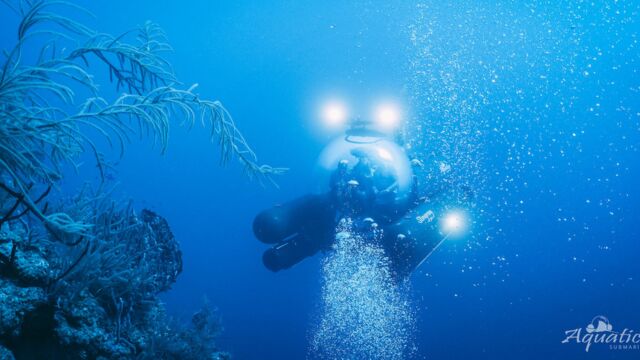These Researchers Journeyed Into The Deep And Made A Horrifying Discovery

Explorers including Fabien Cousteau have explored and mapped one of the most important places for scuba diving with unprecedented accuracy, Belize’s Great Blue Hole. Unfortunately what they’ve discovered is a terrible truth.
Jacques-Yves Cousteau made it famous by making it one of the top ten places for scuba diving in the world. Nearly fifty years on, his grandson Fabien returned to Calypso to explore the natural wonder of Belize’s Great Blue Hole.
Discover our latest podcast
Already charted by his late grandfather, this Cenote, the collapse of Central America, has just benefited from further exploration, and this time using 3d ultrasound mapping. A technology that revealed the physiognomy of the 124 meter chasm, with a diameter of more than 300 meters with unprecedented precision.
More under this adMore under this adA polluted marvel
In addition to the impressive mineral stalactites formed many eons ago when the cenote was still submerged by the gulf, Fabien Cousteau and his colleagues made a rather unpleasant discovery.
Not surprisingly the first of them was plastic. Famous billionaire Richard Branson, laments the presence of bottles in an article he published on his blog saying, “What about the masters of the deep? The real monsters that threaten the ocean are climate change and plastic.”
More under this adMore under this adDespite the disappointment, the underwater explorers did discover some biological wonders. “At a hundred meters below the surface of the north entrance of the cenote is a place which we have called between us Conch Graveyard [...]. It may be assumed that unsuspecting conchs have approached a little too close to the edge, and have fallen into the hole by the thousands,” describes Erika Bergman on her blog.
Trapped forever
Unfortunately for the molluscs that are famous for their shells used as musical instruments, once they’re trapped in the chasm there is no escape, evident from the traces left by the few that tried to escape the trap however unsuccessful. As tragic as it may seem, this macabre discovery showed some encouraging signs, as Erika Bergman pointed out, “The sheer number of visible shells is rather a good indicator of the health of conch populations - it is rather morbid, but it indicates something good.”
More under this adMore under this adThe explorers made a documentary of their expedition to share with the world this natural wonder. It is set to be released in spring. What to live in a new light, more than half a century later, the thrill felt in this "world of silence”.
Check out the video above for more...